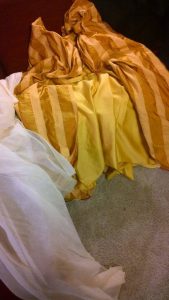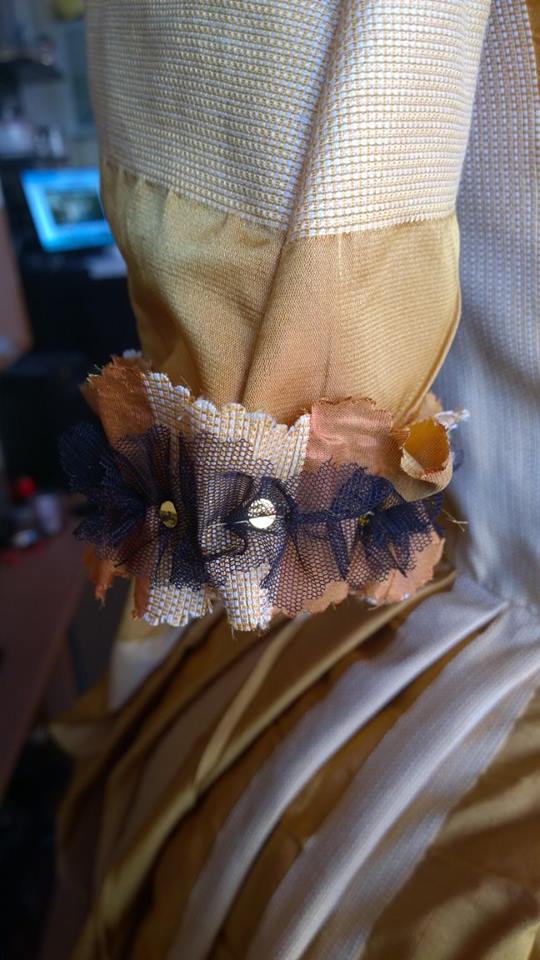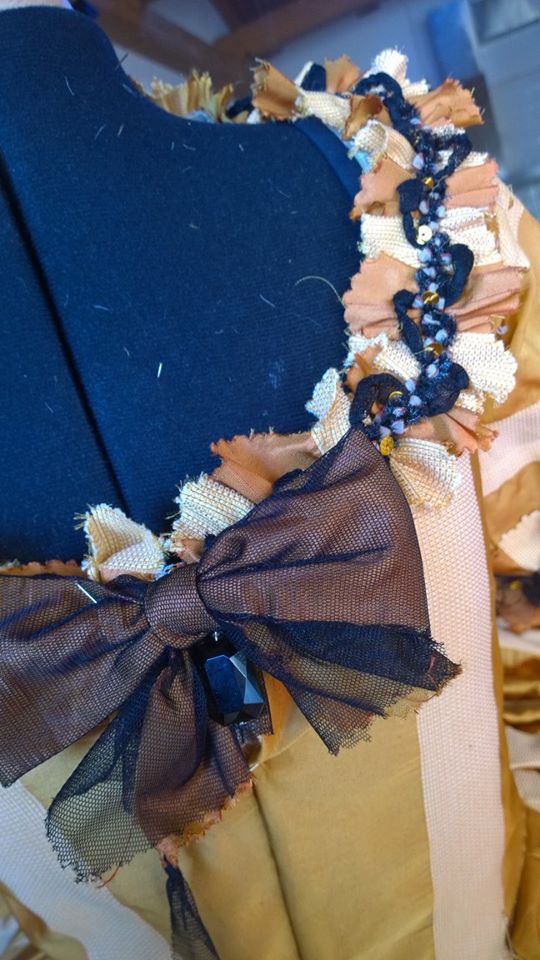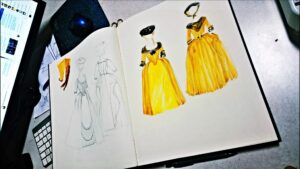In this post I’m trying to explain the process of making my first robe à l’anglaise. It’s far from perfect, but I think it does look nice.
I’m not a fashion historian, and I’m not here to tell you how to or not to work. However, as I did benefit from the experience of other bloggers and of friends to make this, I hope this can help others as well.
In time, I will add some pictures of the finished gown. To see each picture’s credits, just pass the mouse over the image.

Inspiration came from the fabric this time. Meet my curtain and bedsheet fabric.
I loved this indian yellow striped silk. It inspired the dress herself. I matched it with a cotton satin for bedsheets.
Yellow was quite fashionable in the previous decades. However examples of yellow robes à l’anglaise are not many. One of my favorites is the one from Fashion in Details:
http://workflow.arts.ac.uk/artefact/file/download.php?file=1011032&view=113942
And some inspiration came from Janet Arnold’s patterns of Fashion. Some from Sofia Coppola’s Marie Antoinette, a bit from the Duchess too.
But the key gown was Glenn Close’s black and yellow mise in Les Liesons Dangereuses. It had to be black and yellow.
http://photos1.blogger.com/blogger/7858/3223/1600/dangerous%20liaisons%2045%20copy.jpg








